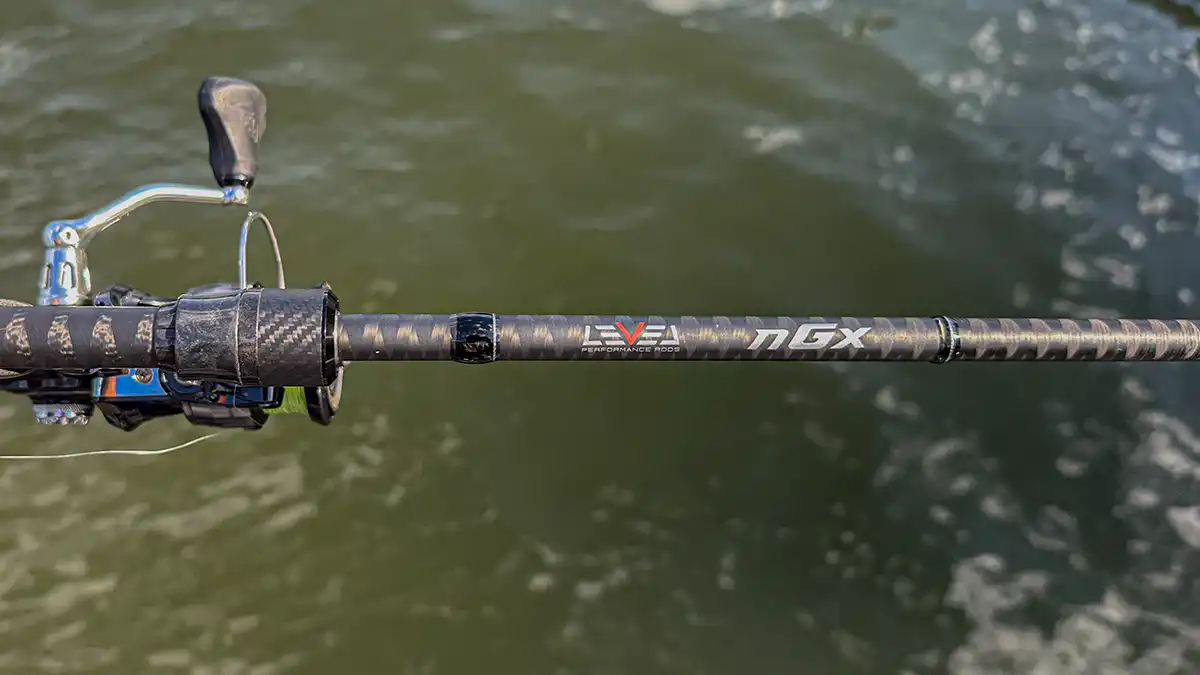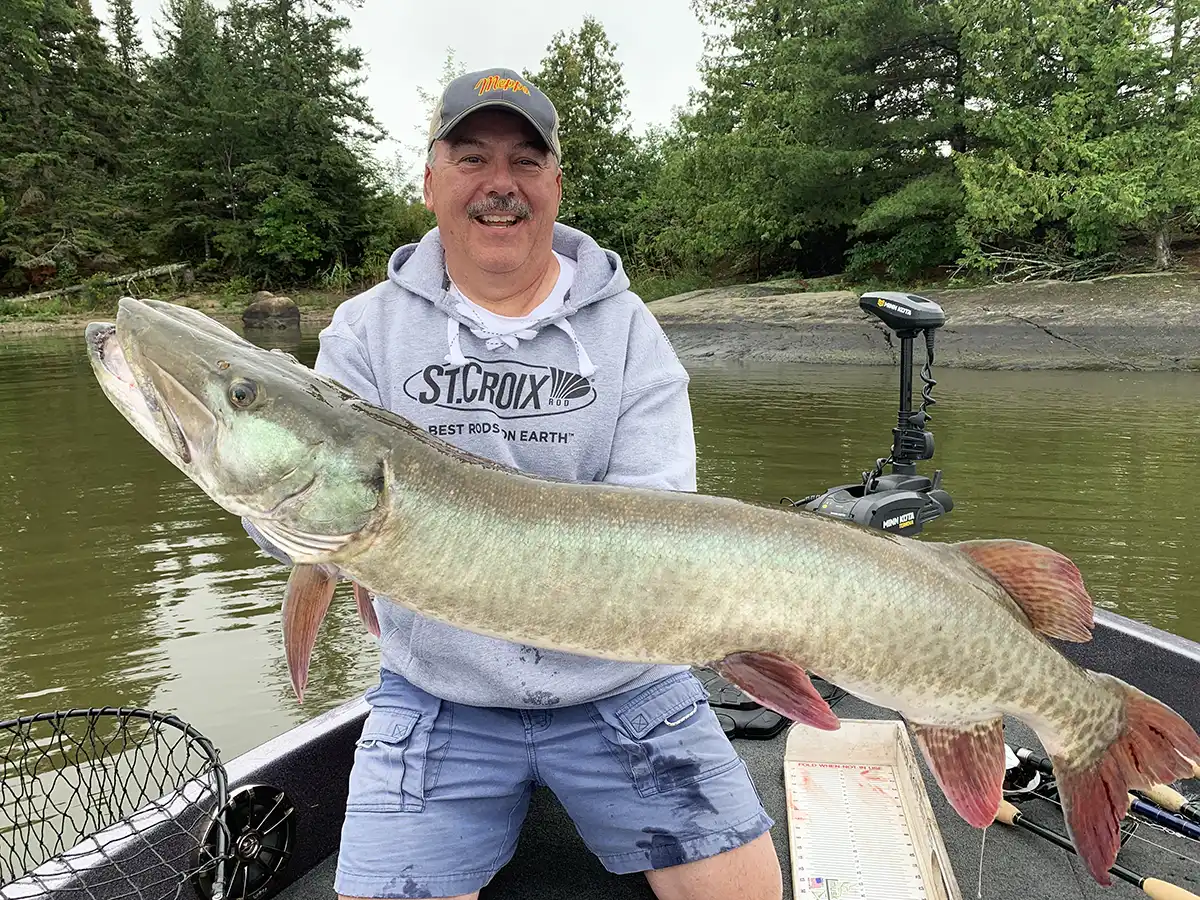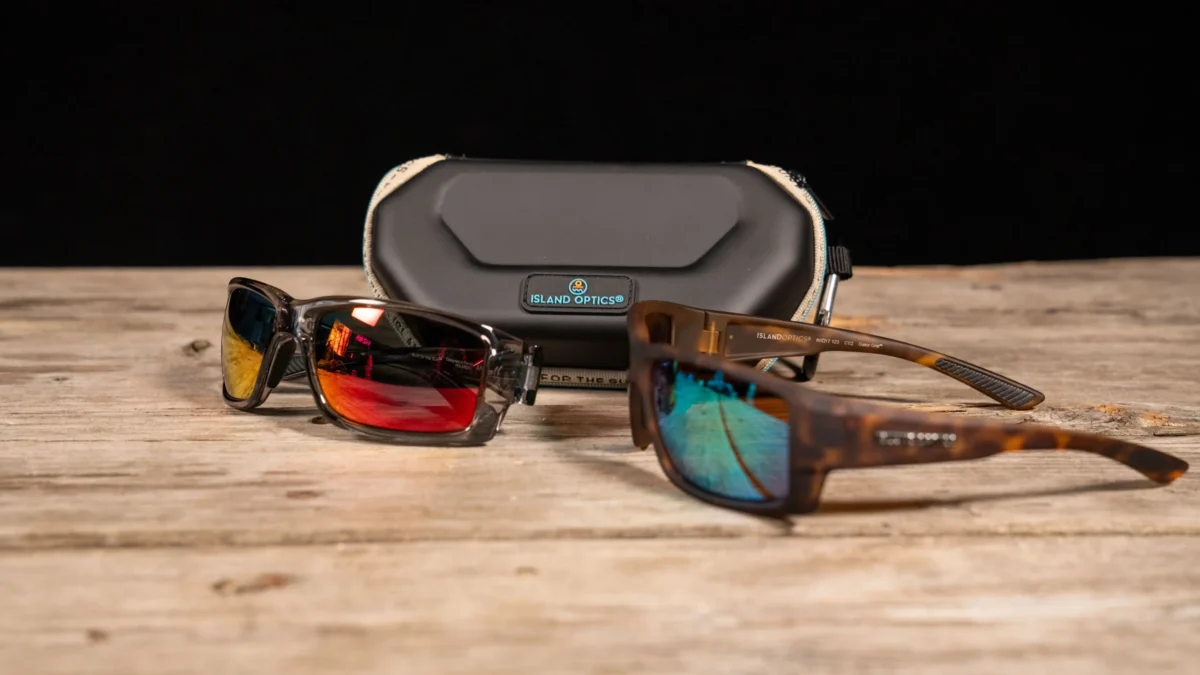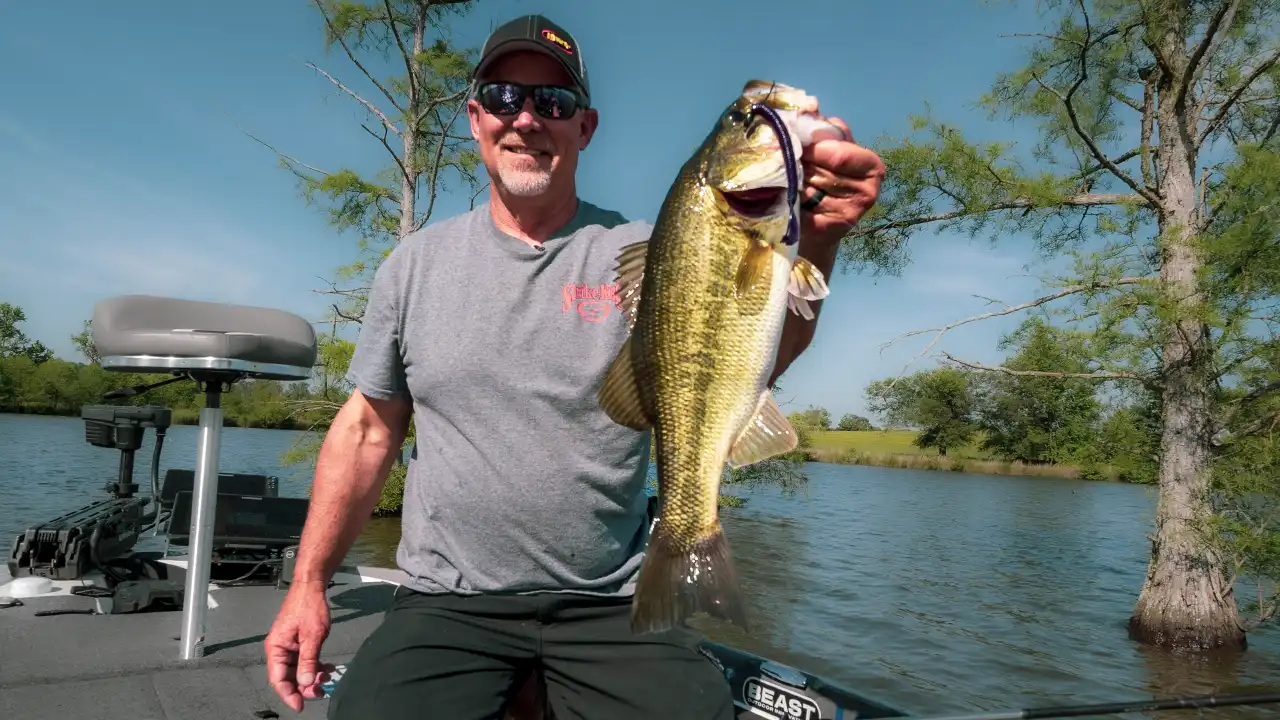A jig is a bait that is effective in both shallow and deep water, as well as in every type of cover you can fish. There are however some characteristics of a jig that may make it more effective in a situation than a different type of jig. Picking the right one will make it easier to fish, look more realistic, and get you more bites.
I generally carry three jigs along in the boat: the Strike King Premier Pro Model, the Strike King Football Head jig, and the Strike King KVD Swim jig. Each has their own set of circumstances where I feel they are most effective, and all of them were primarily designed by two incredible fishermen, Denny Brauer (my dad) and Kevin Van Dam.
Let me break down the whens, wheres, and whys of when I go to each of them.
The Premier Pro Model is the most versatile for me. The head design is great for any type of structure or cover whether it be bushes, grass, or even rocks. I call this a hybrid type head that is made for coming through cover easily and when on the bottom keeps the jig standing upright. I use this jig ninety percent of the time I am fishing a jig. I make adjustments in the weight of this jig depending on the conditions. As a general rule a ½ ounce version is great when I am fishing deeper than five feet of water, I want a quick fall to the bottom, or in thick cover that is difficult to penetrate. A 3/8 ounce version is good when I am fishing shallower than 5 feet, want a slower fall, or am around little cover. Occasionally a ¼ is needed for a super slow fall, or a ¾ ounce is needed for ultra thick cover. With this jig I can give the impression of a crawdad, a baitfish, or even a bluegill by choosing different colors and by using different retrieves.
The Football Head is what I go to when I am fishing deeper structure type situations, like long gravel points, river ledges, or rocky humps. The deciding factor to go to the football head is when I need to stay in contact with the bottom during the entire cast. The shape of the jighead of course looks like a football, and it allows you to almost drag the jig along the bottom without rolling over and getting snagged as often. This style is perfect for giving a great imitation of a crawfish crawling along the bottom. I like the ¾ version the best, mostly because it allows me to feel the structure, allowing me to find those sweet spots of rough feeling bottom.
The Swim Jig is the specialty jig for me. I only use it for bass suspended around cover, but when that is happening, I have it tied on. When the bass are doing this, a lot of fishermen will be throwing crankbaits, spinnerbaits, or topwater, as will I, but you can catch the stubborn bass by getting in their uptight strike zone with the swim jig. The head design allows for easy movement around the cover and gives a great baitfish impression. I keep this jig up off of the bottom and try to make it look like a skittish baitfish tight to the cover. The swimjig is a very good choice in the fall when the bass are “feeding up” in the backs of creeks or around docks. They are great anytime the bass are up, off the bottom, and around cover.
Pick the type of jig design that will allow you to fish the most efficiently in your situation. Not only will you become more confident, you will get more bites. No matter which style you are fishing, always experiment with your retrieve, and let the bass tell you what they are wanting. Perhaps most importantly, when fishing a jig, if the bait ever feels different when you try to move it, set the hook. Bass love to eat a jig, without giving you that “tap, tap†on the end of your rod that a worm does.










